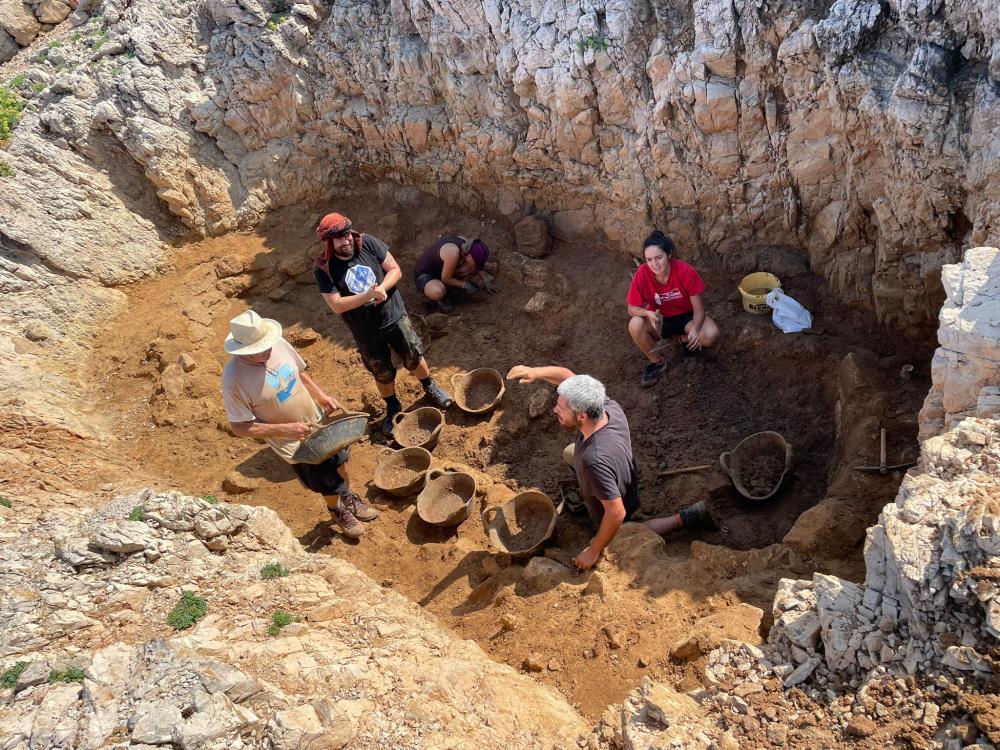 Over the first three weeks of October, a new archaeological campaign was carried out at the navetas settlement of Es Coll de cala Morell, focusing on the excavation of the so-called Alberca Sur (South Tank). This artificial depression is part of a unique hydraulic structure in Balearic prehistory, formed by a set of two tanks for collecting rainwater located in the centre of the promontory.
Over the first three weeks of October, a new archaeological campaign was carried out at the navetas settlement of Es Coll de cala Morell, focusing on the excavation of the so-called Alberca Sur (South Tank). This artificial depression is part of a unique hydraulic structure in Balearic prehistory, formed by a set of two tanks for collecting rainwater located in the centre of the promontory.
This 2023 intervention concludes the five-year project (2019-2023) at es Coll de cala Morell, during which navetas 14 and 15 and the South Tank have been excavated, in addition to various restoration and adaptation works at the site.
The settlement of Es Coll de cala Morell is made up of some 15 navetas. These constructions are the typical dwellings of much of the Bronze Age in Menorca and Mallorca. The settlement also has a defensive wall and a building of uncertain function in the highest part of the settlement. The site was occupied between 1600 and 1200 BC, before the Talayotic period.
The construction of the south tank began with the excavation of the natural rock, leaving a cut-out in the shape of an elliptical cylinder, with approximate dimensions in plan of 8 m and 4 m in greatest and smallest diameters, respectively. Given that the surface of the promontory has a significant slope, the depth of the excavation is variable, reaching more than 3 m at the southern end. The entire interior cut-out is covered by an isodome wall, a very rare construction technique in the Bronze Age in Menorca. This wall combines ashlars from three different geological formations: Jurassic dolomites from the promontory's own substratum, but also Miocene limestone and Quaternary calcarenites brought from the interior.
The space between the rock cut-out and this wall was filled with clay, possibly to waterproof the side of the tank. The bottom of the tank was also formed by a layer of clay, in this case deposited on top of a very carefully made tiling.
The excavated levels inside the tank were basically made up of filling material. There were very few finds. The team found a globular container of the pitoid type resting on the layer of clay at the bottom of the tank. This vessel was very fragmented but retained its full volume. Unfortunately, when it was half excavated, it was vandalised and, one morning, the entire upper part of the piece was found to have been mixed up. This will make the work of restoring the container extremely difficult, if not impossible.
This intervention is part of the Entre Illes project, which also includes the excavation of the Sa Ferradura site (Manacor, Mallorca) and is promoted by the Manacor History Museum, the Association of Friends of the Museum and the Ciudadela-Can Saura Municipal Museum. The excavations at Es Coll de Cala Morell are financed by the Consell Insular de Menorca and the Ciutadella Town Council.